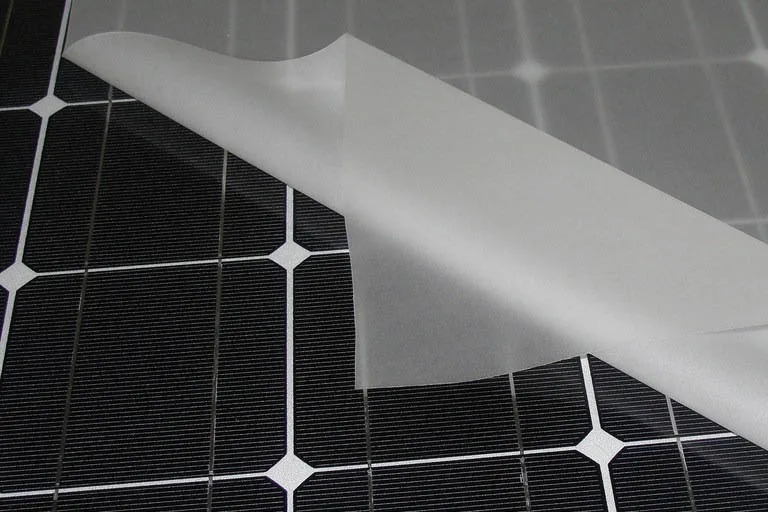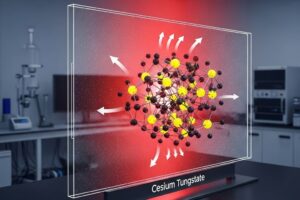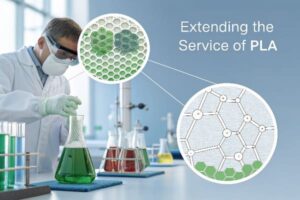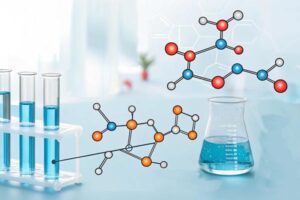Background
As global demand for clean energy continues to grow, the photovoltaic (PV) industry is undergoing rapid technological advancement. Among the materials used in PV module encapsulation, EVA (ethylene-vinyl acetate copolymer) film plays a critical role due to its flexibility, transparency, and adhesive properties. However, EVA films face a major challenge during long-term service: acid formation via hydrolysis. To address this issue, hydrolysis stabilizers have emerged as a powerful solution, playing a key role in acid neutralization and in extending the service life of solar modules.
Why Does EVA Film Generate Acid?
EVA film is widely used in PV module encapsulation thanks to its excellent optical and mechanical properties. However, the vinyl acetate (VA) groups in the polymer structure are susceptible to hydrolysis under conditions such as heat, humidity, and ultraviolet (UV) exposure. This reaction releases acetic acid as a by-product.
The acetic acid formed is highly corrosive. It can degrade the silver paste and metal busbars in solar cells, corrode glass and encapsulation interfaces, and accelerate crosslink network breakdown. Over time, this leads to issues such as yellowing, delamination, reduced light transmission, and decreased module power output. The acidification problem is particularly severe in tropical, coastal, and high-humidity environments, posing a significant threat to module durability.
How Do Hydrolysis Stabilizers Work?
Hydrolysis stabilizers are functional additives that neutralize and eliminate acidic hydrolysis by-products. The most widely used type is carbodiimide-based compounds. These molecules contain highly reactive –N=C=N– groups that react with free carboxylic acids like acetic acid to form stable urea derivatives, thereby chemically neutralizing the acid and blocking the chain degradation process.
This neutralization mechanism offers multiple advantages:
High Selectivity: Reacts only with free acids, without affecting EVA’s crosslinking system or polymer structure;
Effective at Broad Temperatures: Active across a wide range (from room temperature to 120°C);
No Corrosive By-products: The resulting urea compounds are inert and non-acidic;
Good Compatibility: Can be used alongside other additives such as UV absorbers and desiccants for synergistic effects.
Methods of Application and Processing Guidelines
Hydrolysis stabilizers can be incorporated into EVA films in various forms—liquid, powder, or masterbatch—depending on the manufacturing process and performance targets. Common application methods include:
Incorporation during EVA pelletization: Suitable for large-scale compounding. Typical dosage: 0.3–0.8 wt%. Care should be taken to avoid excessive melt temperatures that may degrade the additive.
Addition during calendaring or film extrusion: Masterbatch form is often used here. Dosage range: 0.5–1.0 wt%. Allows flexible formulation adjustment.
Synergistic use with other functional additives: When combined with UV absorbers, antioxidants, and desiccants, a comprehensive multi-functional stabilization system is achieved, enhancing long-term reliability under complex field conditions.
Performance Validation: Proven Improvements Under Accelerated Aging
Third-party laboratory tests have demonstrated the significant effectiveness of hydrolysis stabilizers in improving the aging resistance of EVA films.
Under accelerated aging conditions (85°C/85% RH for 1000 hours):
Unstabilized EVA films released 20–25 ppm of acetic acid, accompanied by visible yellowing and delamination.
Stabilized films containing 0.5% carbodiimide showed acetic acid levels below 2 ppm.
Light transmittance loss was significantly reduced.
Corrosion of cell interconnects was notably mitigated.
Peel strength between layers improved by more than 20%, reducing the risk of mechanical failure.
Additionally, the stabilizer helps protect the crosslinking network from acid-induced degradation, slows down the loss of mechanical properties, and enhances the module’s overall resistance to UV exposure, thermal cycling, and humidity aging.
Industry Trend and Future Outlook
In the past, PV module manufacturers often relied on single-additive solutions such as desiccants or UV blockers. Today, more companies are adopting multi-functional additive systems, with hydrolysis stabilizers being a key component of this evolution.
As new high-efficiency solar cell technologies like TOPCon and HJT (heterojunction) emerge, they demand higher reliability from encapsulant materials. In this context, hydrolysis stabilizers will play an increasingly critical role in enabling modules to maintain stability and performance for 25–30 years, even in extreme environments.
Conclusion
Hydrolysis stabilizers serve as essential additives in EVA films for preventing acid formation and degradation caused by environmental exposure. Among these, carbodiimide-based products are particularly effective due to their selective reactivity with free acids, thermal stability, and compatibility with other stabilizers. Their use significantly extends the service life of solar modules and enhances long-term performance in real-world applications.
If you’re seeking a highly effective, environmentally friendly, and low-migration solution for EVA acid removal, contact us today. We offer customized carbodiimide-based hydrolysis stabilizers along with full technical support to help you build more durable, high-performance photovoltaic modules.







